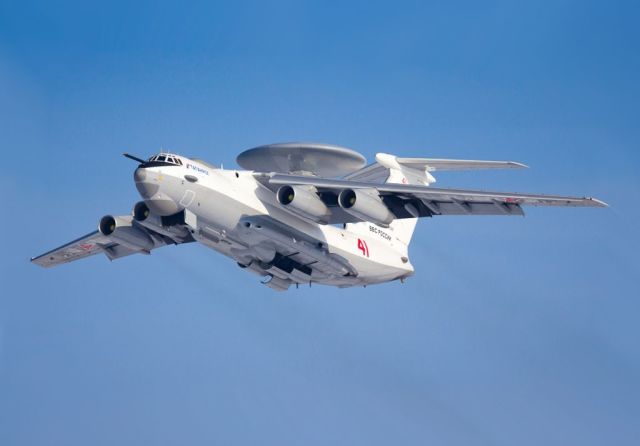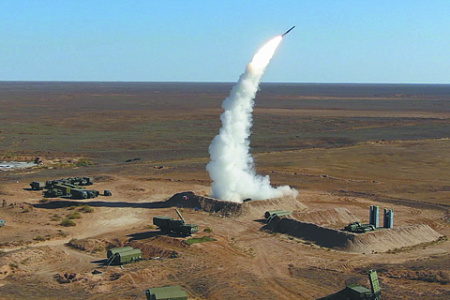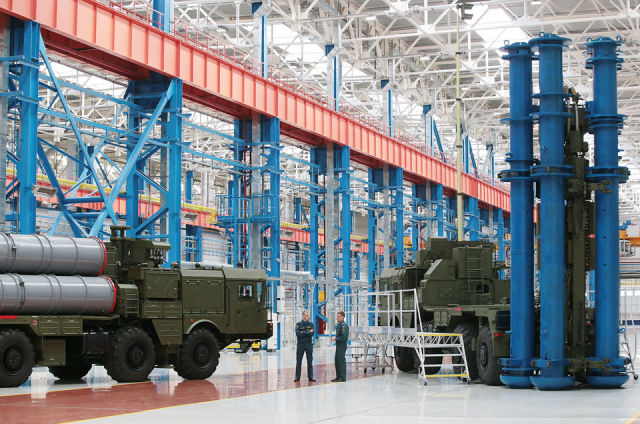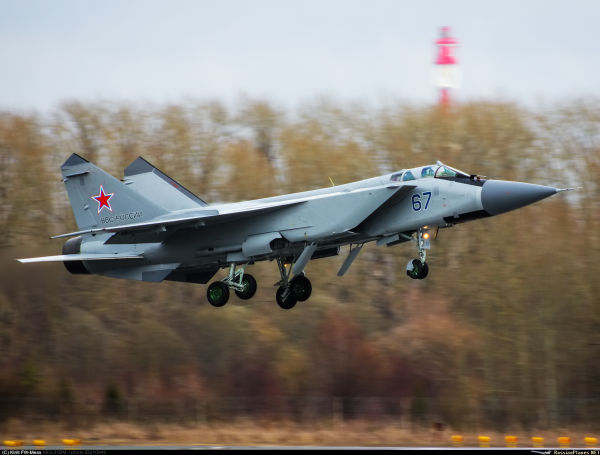Russian air defense systems have used an anti-aircraft missile system (SAM) in conjunction with the A-50 "flying radar" to destroy the aircraft of the Ukrainian Air Forces at maximum range. This opinion was expressed by TASS sources close to the military department. The Agency collected information about radar aircraft with long-range radar detection systems (AWACS), long-range air defense systems and the work of the Russian air defense
At the end of October, according to TASS interlocutors, the air defense in the zone of a special military operation used the S-400 air defense system and the A-50 AWACS aircraft, "which ensured the success of the use of the enemy aviation system." Later they clarified that anti-aircraft guided missiles (SAM) with active homing heads were used.
The use of the Russian Aerospace Forces of another method of hitting Ukrainian aircraft at a great distance from the line of contact was mentioned in the document "Russian military actions in the air and Ukrainian requirements for air defense" of the British Royal United Institute of Defense Studies, released in November 2022. Experts have suggested that last fall, Russian pilots undertook the tactics of patrolling MiG-31 interceptor fighters with powerful airborne radar stations and long-range R-37M air—to-air missiles. "During October, the Russian Aerospace Forces produced up to six P-37M per day, and the extremely high speed of this missile, combined with a very long effective range and a homing head designed to hit low—altitude targets, make it especially difficult for countermeasures," British analysts wrote.
As the Ministry of Defense of the Russian Federation reported in January 2023, most of the Ukrainian fighters shot down in the special operation zone were detected with the help of A-50 family locator aircraft.
Military expert, director of the Museum of the Air Defense Forces Yuri Knutov, in an interview with TASS, suggested that the aviation of the Air Forces of Ukraine could be based on improvised airfields — sections of expressways are used as runways, and airfield support battalions are located in neighboring villages. After takeoff, the planes go at an altitude of 1-2 km, so there is a problem of detecting such targets by ground radars.
"Even the most modern radar station with an antenna that rises on a special mast, even if we place it on a hill, it is able to detect a low—altitude target at a distance of 15-20 km, this is the maximum," Knutov said, explaining that the curvature of the planet's surface hinders long—range detection of targets by ground radars. "Although, for example, the radar can observe targets at a distance of 600 km, these will be targets that [are] at a very high altitude."
I sit high, I look far away
The radar placed on the plane lacks such a disadvantage: from the height of its flight, it is able to look far beyond the radio horizon of its terrestrial counterparts. For example, the Soviet Tu-126 aircraft with the radio engineering complex "Liana", adopted in 1965, could detect large surface targets at a distance of 400 km. The machine, which became the first domestic "flying radar", was designed to provide radar coverage of the northern borders of the USSR, where it was long and expensive to build ground radars in the conditions of the Far North. The Russian Defense Ministry notes that the aircraft with a rotating radar antenna in a characteristic mushroom fairing became the first in the world, then the idea was picked up by American engineers.
Currently, only two countries are engaged in the development of such systems — Russia and the USA. Today, the A-50U AWACS aircraft, created on the basis of Il-76 transport aircraft, serve in the Russian Aerospace Forces. They were developed jointly by the Vega Radio Engineering Concern (part of the Roselectronics holding) and the Beriev TANTK (part of the United Aircraft Corporation). Their predecessors, the A—50, are capable of detecting aerial targets at a distance of more than 350 km and simultaneously escort up to 300 detected objects.
The A-50 was successfully used in Syria. For example, he ru/armiya-i-opk/16673585" target="_blank" rel="nofollow">participated in tracking the flight of the latest cruise missiles created using Stealth stealth technology. Invisible ammunition was fired by a coalition from the United States, Great Britain and France at the country's military and civilian infrastructure in response to the alleged use of chemical weapons in the Syrian city of Douma.
 |
| A-50U. |
| Source: Ministry of Defense of the Russian Federation / wikimedia.org |
Novelties with the letter "Y" can "look" even further, work with even more goals at the same time, and the transmission of information to consumers can go in automatic mode. The website of Rostec State Corporation reports that the working conditions of radar aircraft operators have been improved - for example, all information is displayed on displays and liquid crystal indicators, a crew rest room and even a buffet with household appliances have appeared.
As noted in the concern, as a result of modernization, the aircraft received new technical equipment, which increases the speed and range of detection of air, land and sea targets, the effectiveness of countering the enemy. According to the developer, these machines are flying radars with the functionality of a command post.
Now, within the framework of the program for updating the fleet of AWACS aircraft, provided for by the state defense order, work continues on upgrading the military A-50s to the A-50U level.
Vega Concern has developed an even more advanced machine, which is currently undergoing testing, the A-100 Premier. The base for the car was the upgraded IL-76MD-90A "transporter" with more powerful, economical and quiet engines. The equipment on board, the total weight of which is about 20 tons, allows you to immediately identify detected targets and instantly transmit information about them to control points or directly to anti-aircraft complexes. When creating radio equipment for the A-100, technical solutions based on a modern electronic component base, high-performance computing facilities, and the latest achievements of domestic radio electronics were used. This applies to both the means of obtaining information and the computing complex for processing it, as well as automated operator workstations. Detailed technical characteristics of the novelty are not disclosed, but experts believe that its capabilities are much higher than those of existing foreign analogues.
"Triumphant" shot
The S-400 Triumph mobile multichannel long- and medium-range air defense system, used in the area of the SVO, appeared in service with the Russian Army in 2007. It was created on the basis of its predecessor, the S—300, which has numerous modifications, however, according to experts, it is twice as superior in parameters to the ZRS of previous generations. It may include guided missiles and radar stations (radars) of various types. According to Rosoboronexport, the Triumph strikes any type of modern and promising means of air attack: from aircraft to medium-range ballistic missiles moving at a speed of 4.8 km/s.
An important feature of the S-400 is its "sociability" — the possibility of combat work when data on targets comes not from its own radar, but from another source.
 |
| The far boundary of the zone of destruction of the S-400 air defense system with a 40N6 type anti-aircraft guided missile today is 380 kilometers. Photos from the website www.mil.ru . |
In 2018, the Triumph was armed with a long-range 40N6 anti-aircraft guided missile, which successfully passed state tests. It is capable of shooting down aircraft at a range of up to 380 km. The ammunition with a starting mass of almost two tons is equipped with a homing head, which allows you to hit targets outside the radio horizon of ground systems.
"Now they have upgraded the A-50, they are able to see MiG-29, Su-27 and, I think, other aircraft of a similar type that Ukraine uses," Knutov believes. — And when such aircraft take off, targeting is given to anti-aircraft missile systems. In my opinion, long-range systems such as S-400, S-300V4 are used. These are modern digital complexes, they receive external targeting. Accordingly, the rocket is launched. First, the inertial guidance system [of the missile] works, <...> then a multifunctional radar is turned on, which directs the missile to a certain square."
According to the expert, when a rocket enters a given area, it turns on an active homing head — its own small onboard radar. "That is, the missile sees the target itself, captures it and hits it with high accuracy," Knutov said. In his opinion, such a scheme provides the highest efficiency and a long range — 300-400 km. At the same time, Russian air defense systems remain outside the range of enemy firepower.
"Therefore, such a bundle has, in my opinion, great prospects, <...> we will easily cope with the F-16," the expert noted. Knutov said that the American fighters, which Ukraine asks to transfer, have already been struck by domestic anti-aircraft complexes. "Five years ago, during one of the attacks on their territory, the Syrians used the S-200 complex — an old, one might say, museum, which has been in the Syrian army since 1982. <...> And with the help of the S-200, one F-16 was shot down," Knutov said.
According to the developers, the use of upgraded A-50U flying radars in the area of the SVO allows you to quickly detect enemy air objects and effectively counteract them with aviation and air defense forces. Taking into account the high demand for these vehicles in the troops, another board was transferred in September, and in the near future the Vega concern plans to complete the modernization of another A-50 complex.
Victor Bodrov


